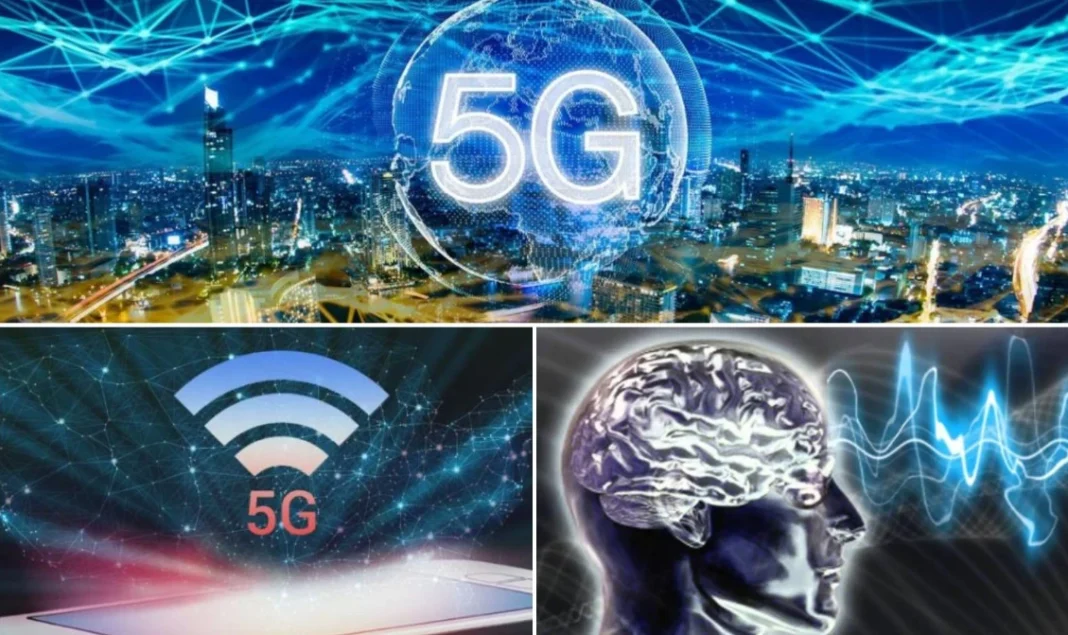The United States is pioneering the way for the implementation of 5G technology. The Federal Communications Commission’s (FCC) Chairman, Tom Wheeler, in June 2016, declared the commission’s intentions to unlock low, mid, and high-frequency spectrums for 5G deployment. However, the health implications that are now hotly contested were conspicuously absent from his remarks. In the ensuing discussion, we will present eleven reasons why the radiation generated by 5G technology could be cause for concern, complete with specific examples and instances.
Numerous studies associate exposure to low-level wireless radio frequency radiation with a variety of adverse biological effects. The list includes single and double DNA strand breaks, oxidative damage, the disruption of cell metabolism, the increased permeability of the blood-brain barrier, the reduction of melatonin, the disruption of brain glucose metabolism, and the generation of stress proteins.
In 2011, the World Health Organization (WHO) categorized radio frequency radiation as a potential Group 2B carcinogen. In a more recent development, a $25 million study by the National Toxicology Program concluded that the type of radio frequency radiation utilized by cell phones could indeed be carcinogenic.
5G’s Unique Characteristics: New Frequencies, New Concerns
It is against this backdrop that the introduction of 5G technology becomes worrisome. One of the defining features of 5G technology is that it uses frequencies above and below existing frequency bands. This, coupled with the fact that 5G is expected to utilize higher frequency bands predominantly in some countries, introduces unique concerns, which will be detailed below along with corresponding examples.
5G technology, when fully deployed, will involve the use of millimeter waves, poorly transmitted through solid material. This necessitates installing base stations every 100 meters in all urban areas worldwide. For example, a small city like Miami could potentially end up with thousands of these stations, significantly increasing the public’s exposure to wireless radiation.
Companies such as SpaceX and OneWeb plan to launch approximately 20,000 satellites that will blanket the Earth with powerful, focused, steerable beams. For instance, a rural resident in Montana might not be within range of ground-based antennas, but they won’t escape the reach of these satellites, leading to inevitable exposure to 5G radiation.

The Global Appeal: Scientists’ Warning
Numerous petitions by international scientists have been made to halt the expansion of wireless technology, referencing various scientific studies. For example, a major study in 2011 by the International Agency for Research on Cancer (IARC), a division of WHO, concluded that RF radiation is possibly carcinogenic to humans.
The massive deployment of 5G satellites could potentially pollute the global electric circuit and possibly alter the Schumann resonances, which all life on Earth has evolved alongside. This could universally affect migratory birds like the red knot, for example, that use Earth’s magnetic field to navigate over long distances.
The Lingering Threat: Chronic Health Effects of RF Radiation
RF radiation has both immediate and long-term effects. For instance, heart disease, a major cause of death globally, has been linked to long-term exposure to RF radiation. A syndrome known as electromagnetic hypersensitivity (EHS) can lead to chronic health problems, like disrupted sleep patterns, which in turn can lead to other health issues like depression and anxiety.
In conclusion, it’s crucial that we remain vigilant and proactive in understanding and mitigating the potential risks associated with 5G radiation, given these concerns. With the introduction of 5G technology, it is essential to continue researching its effects on human health and the environment while creating safeguards to protect the public.




